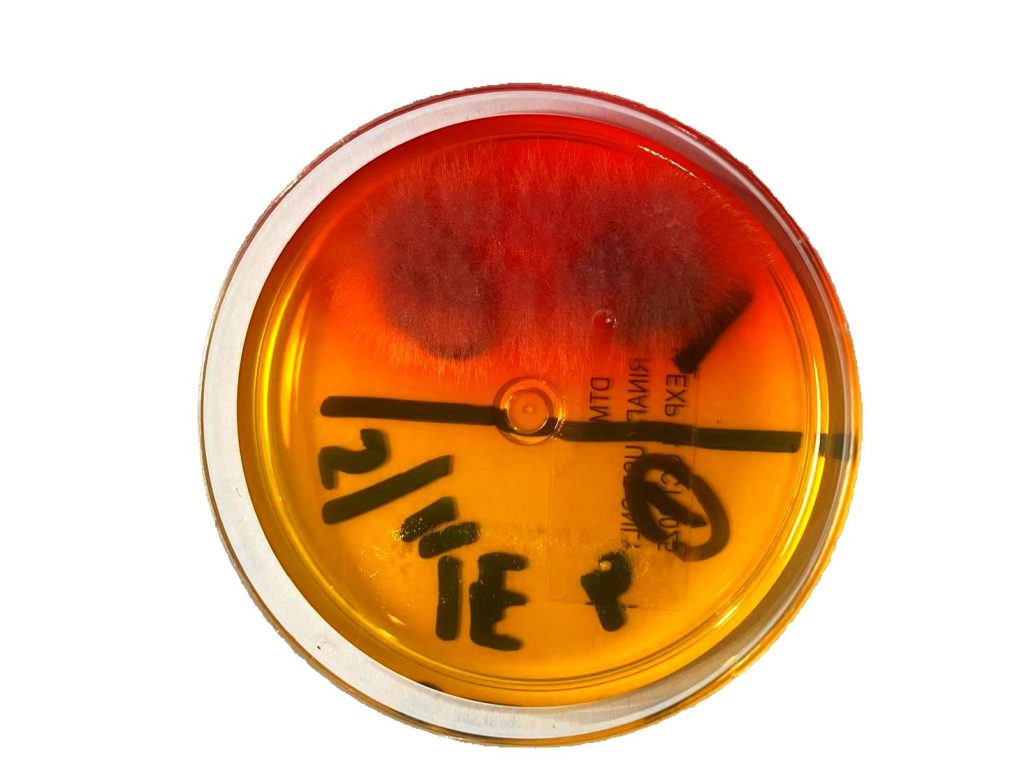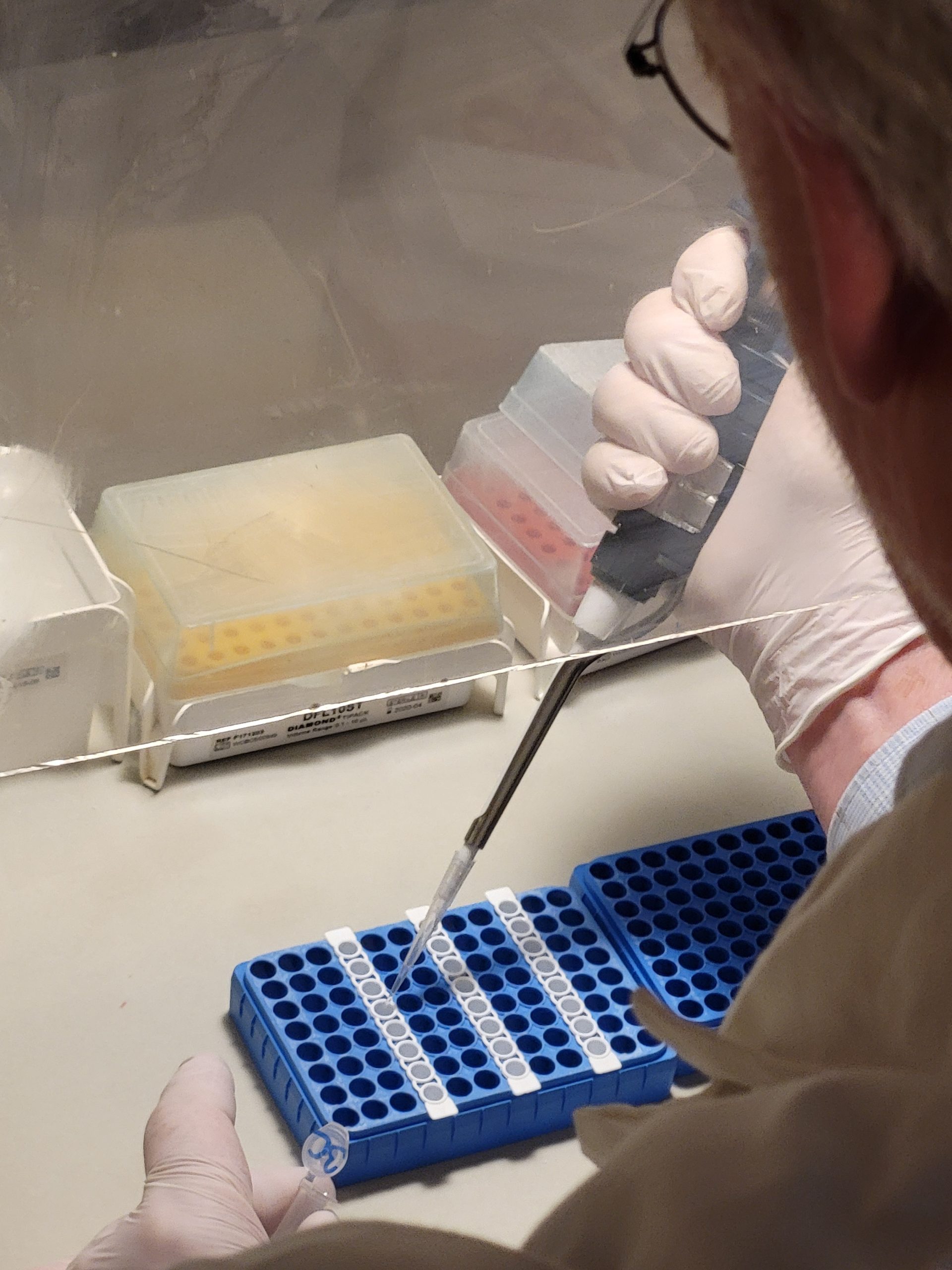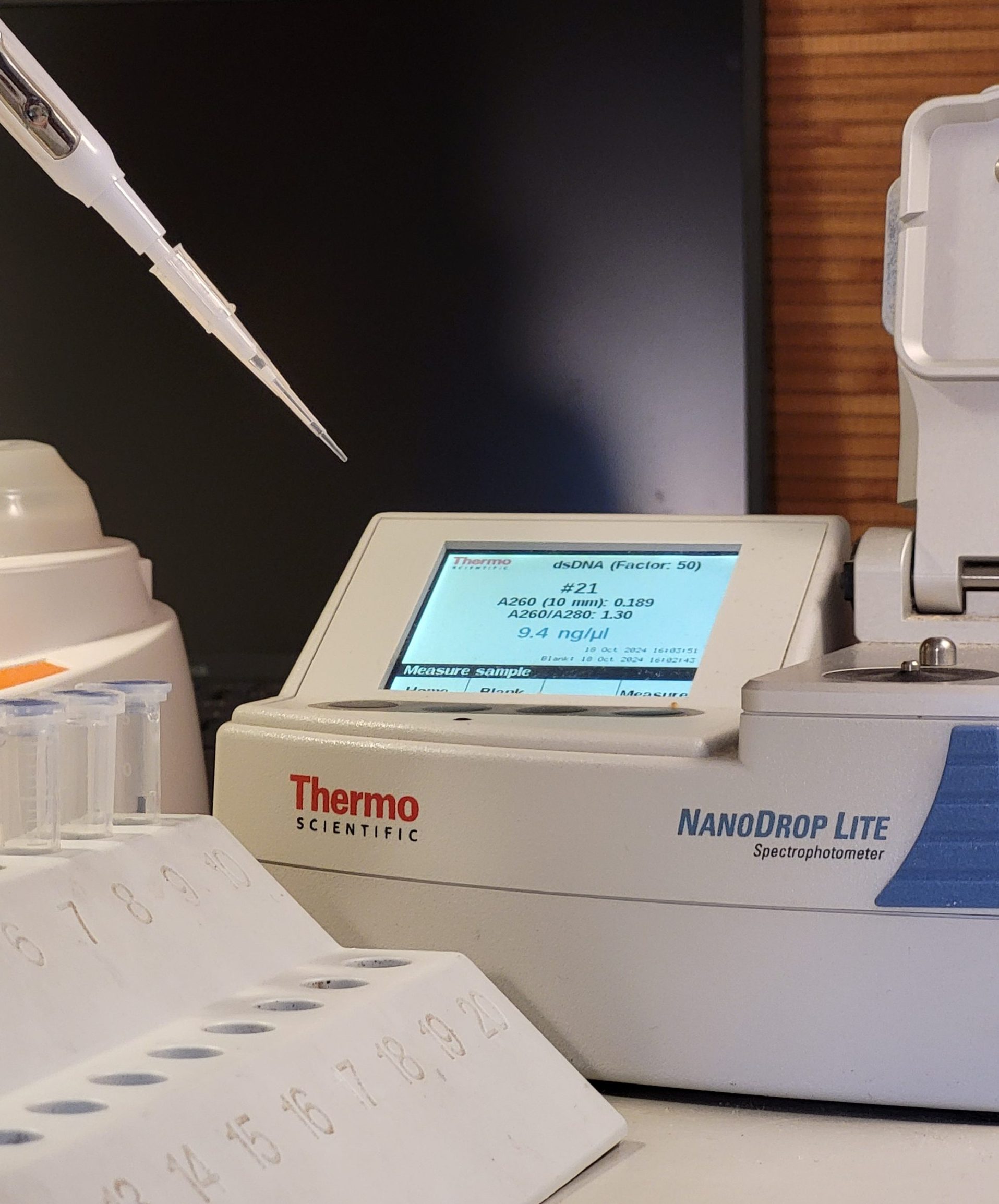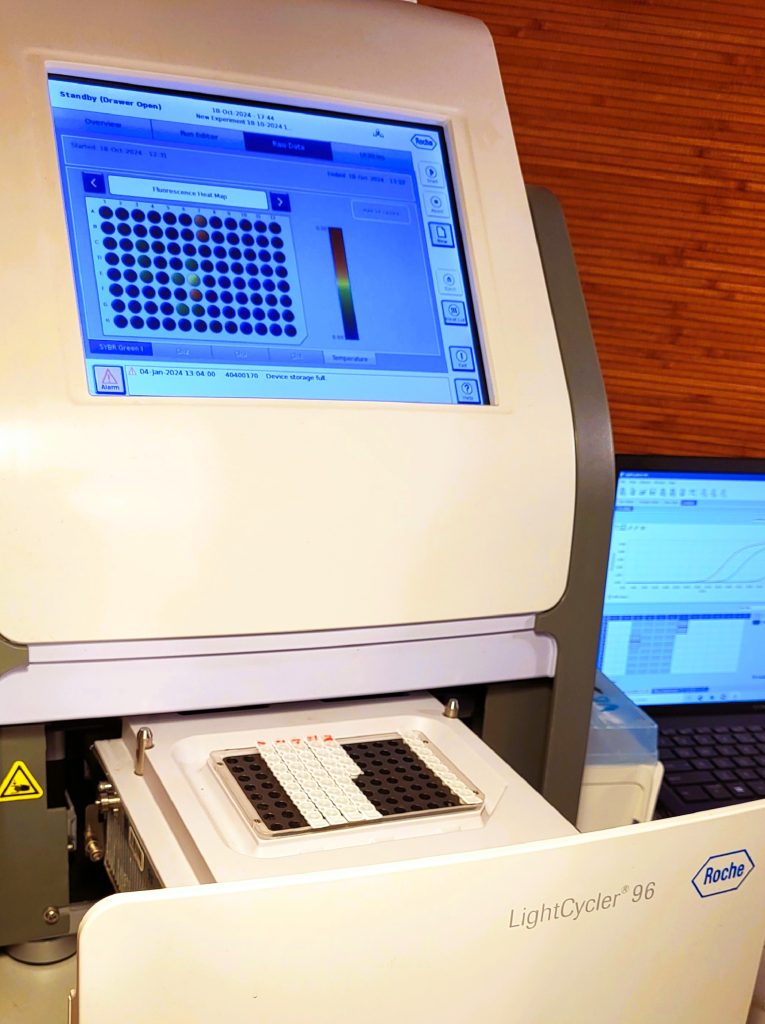Culturing on special growth media was the usual diagnostic method

In culturing, hair/flake material is placed on special media which are then incubated for at least 10 days. Daily checks are made to see if the typical growth of dermatophytes can be observed. Culturing can be done by a veterinarian using specially purchased media, or the sample can be sent to an external laboratory.
Knowledge is a prerequisite
Whatever method is chosen, it is important to be aware of erroneous results. It is therefore essential that veterinary practices that perform the culturing themselves have a protocol in place that describes the method and responsibilities. If the testing is outsourced, the choice of laboratory is important, because specific expertise is not always available.
The reliability of the result is essential
A reliable result is of great importance, on the one hand because dermatophyte infections in animals are contagious (also for humans) and on the other hand because the treatment of such an infection is stressful for the animal and requires a lot of energy and time from the owner. And of course, treatment with antimycotics must be well-founded. In situations where many animals are together, such as catteries and shelters, a ‘dermatophyte outbreak’ is a nightmare for humans and animals.
Reliable diagnostics start with a good sample
The reliability of the test result depends on the quality of the sample and the knowledge/skills and experience of the veterinarian or external laboratory. A good quality sample is representative of the patient/skin lesion(s) and contains sufficient hair and skin material, especially scales.
Nevertheless, one should realize that a test result is always based on a sample – not the entire animal – and that skin samples are extremely variable and never homogeneous, unlike e.g. a blood sample. Moreover, the sample is always a snapshot; the local conditions in/around the lesion are highly variable. Therefore, the lesion must be brushed vigorously when taking the sample.
Sensitivity and specificity
In diagnostic testing, the reliability of the test result is determined by 2 elements: sensitivity – how reliable is a negative result – and specificity – how reliable is a positive result. A specialized laboratory has more knowledge and expertise than a practicing veterinarian or a general laboratory. In ‘culturing’, the ‘sensitivity’ is strongly influenced by the extent to which the sample material has been brought into contact with the culture medium. Hair in particular is difficult to handle/manipulate in this respect. The ‘specificity’ depends on the expertise of the person performing the tetsing.
The most commonly used culture media give a ‘colour change’ when dermatophytes grow, but this is not 100% specific, which means that further microscopic examination is sometimes necessary. The latter is often neglected in practice because the necessary knowledge is lacking. In short, ‘culturing’ has uncertainties.
Growing a culture takes a lot of time
In addition to these uncertainties, there is another problematic aspect of ‘culturing’: the slowness. Dermatophytes grow -and mature- slowly and that is why it can sometimes take up to 3 weeks before a negative result is available. A relatively reliable positive result can easily take at least 7 days, but often it takes longer. Until the result is available, there is uncertainty (with all the consequences). This is frustrating for everyone involved.
The new test from VdQd



VdQd has developed a test that eliminates the above-mentioned ‘uncertainties’. The sample is optimized using a special brush, the sensitivity and specificity are maximized thanks to a unique lysis and extraction method of the entire sample followed by an analysis at DNA level using a so-called real-time PCR. The test is specific for all common veterinary dermatophytes and distinguishes between the two families. And, performing the test only takes a few hours!
Maximum reliability
An extensive validation study (>200 practice samples) and our continuous quality assurance (using culture) have shown that the VdQd test is as sensitive as culturing performed by an expert, while the specificity is 100%. This means that the reliability of this new test is maximal for both the negative and the positive result.
NB: 1. This also applies to samples in the context of treatment control. In fact, this test is even better suited for this, because in culture, ’treated” dermatophytes often grow less easily. Our experience shows that false-positive – ‘dead dermatophyte’ – results do not occur if the patients have been washed according to protocol.
NB: 2. A skin sample is never more than a snapshot of a relatively dynamic process. Think of licking the lesion clean – cat has ‘sandpaper’ tongue! That is why it is important to brush vigorously when taking the sample; it is mainly about skin flakes and skin cells.